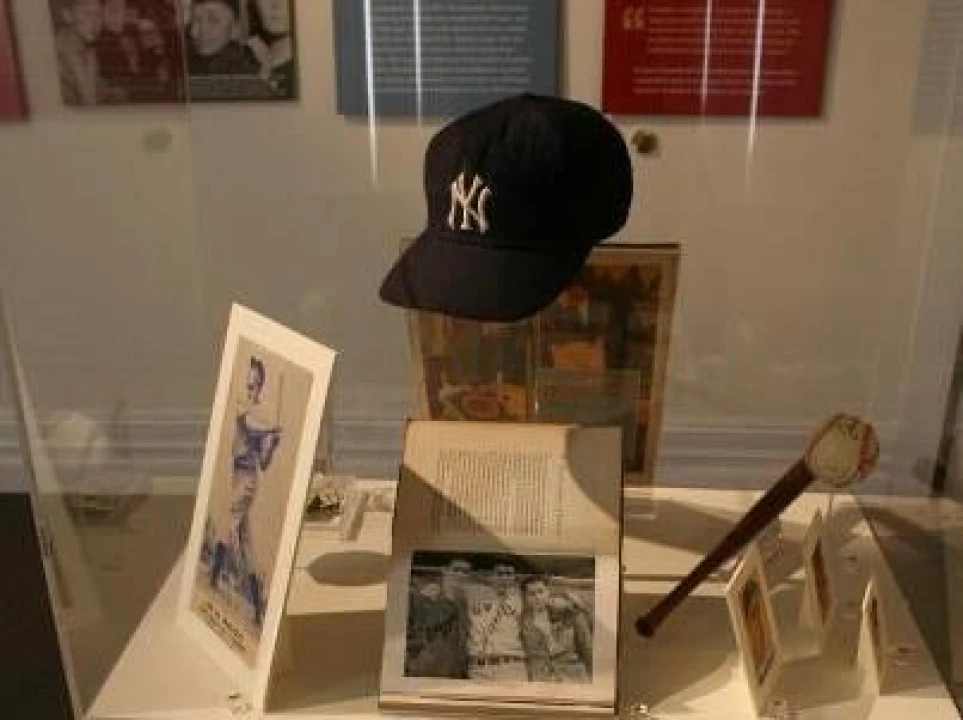We have an answer for that famous question Paul Simon and Art Garfunkle posed some 45 years ago: "Where have you gone, Joe DiMaggio?"
The answer: Reno.
Photographs and memorabilia of the late, great DiMaggio — from his early days with the San Francisco Seals to his Hall of Fame career with the New York Yankees — are part of a remarkable documentary exhibition on display at Arte Italia, Reno's Italian cultural center, on Flint Street.
"Italian Americans at Bat: From Sand Lots to the Major Leagues" focuses on Italian-Americans' influence on baseball and baseball's influence on the Italian-American community. It is open to the public and admission is free.
From A to Z – Abbaticchio to Zito, if you will — the exhibition traces Italian-Americans' involvement in baseball from the turn of the 20th century to modern day, including the contributions of pitcher Barry Zito and second baseman Marco Scutaro in helping the San Francisco Giants to the 2012 World Series title.
"This exhibit was actually christened in San Francisco (at the Museo Italo Americano)," said Kristen Avansino, president and executive director of Arte Italia. "It was there for five months and was seen by thousands and thousands of people. It was very well attended. Then it came here."
The San Francisco exhibit was funded through a grant from the Reno-based E.L. Weigand Foundation. Museo Italo, in turn, acted as curator of the Reno exhibit at Arte Italia.
The exhibit details a rich history but also the challenges some Italian-Americans faced within their own families, some of which saw baseball as a "silly game," and from the outside, where players faced a level of discrimination.
"Italian-Americans wanted to assimilate into this culture, and a way for them to do that was to become Americanized through baseball," said Annie Turner, program director at Arte Italia. "So it's really, really fun to see how people worked so hard to become part of this culture."
Many Italian-American baseball players — including DiMaggio and his brothers, Vince and Dom — had their start in baseball in the sandlots of San Francisco's North Beach and the old Pacific Coast League and eventually made their way to the major leagues.
The DiMaggios were not alone. In fact, more than 30 years before DiMaggio joined the New York Yankees, Italian-Americans were making an impact on baseball. The first — or at least the first to play under his given name — was Ed Abbaticchio, who broke into the majors with the Philadelphia Phillies in 1897 and had a 13-year career in pro ball.
One early star that did change his name to avoid ridicule from sportswriters who bristled against what they termed were "un-American" names in baseball, was Francesco Pezzolo, who played under the name Ping Bodie.
Pezzolo adopted the name from the California mining town (now ghost town) where his father once worked. In 1918, he played with the New York Yankees and was Babe Ruth's roommate. He also played for the Chicago White Sox and Philadelphia A's.
The exhibit tells the story of the hundreds of players of Italian descent through dozens of photographs and memorabilia, which ranges from baseballs autographed by DiMaggio to the jerseys worn by the likes of St. Louis Cardinals manager Tony LaRussa in the 2010 World Series and Zito in the 2012 World Series.
Numerous Hall of Famers are featured, including Roy Campanella and Tommy Lasorda of the Dodgers, Phil Rizzuto and Yogi Berra of the Yankees, Ron Santo of the Cubs and Eppa Rixey of the Phillies.
The exhibit also includes players and managers whose Italian heritage doesn't show in their names — former skipper Billy Martin and pitchers John Smoltz and Andy Pettite, to name a few.
"The opportunity to showcase the adversity and accomplishments of legendary Italian-American baseball players is one we welcome and relish," Avansino said. "We want sports afficionados to love art and people who know everything about our history to understand the joy of being in the stands and watching the team effort. That makes a community. That makes a population that has a broader appreciation for everything that is art in Reno."
by Guy Clifton



